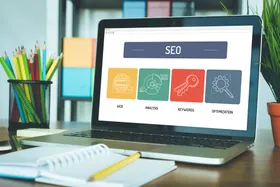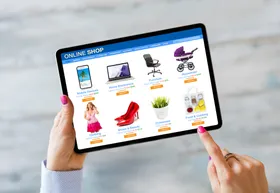How to Monitor Competitor Prices to Optimize Your Product Pricing
Published February 28, 2022

AI Summary
Price is one of the most important factors in ensuring your customers actually purchase your items. In today’s digital-first consumer landscape, around 85% of customers research online before buying anything. During this research, checking the pricing of your competitors is often high on your intended customer’s to-do list.
With competitor price tracking, Shopify store owners and retailers can ensure that they can match other brands when offering customers the best possible value.
How to Create a Competitor Price Monitoring Strategy
There’s no one-size-fits-all method for collecting data for business and customer analysis insights. However, most organizations will start with a few simple steps to help direct and guide their research. When creating your competitor price monitoring strategy, start by:
1. Setting Your Market Positioning
Determine your position in the market so that you know what kind of other companies you should be comparing yourself to. One of the biggest foils of brand pricing is lowering your price too far because you fail to determine your position first. If you’re trying to build an image as a luxury brand, you should be comparing your pricing strategy to competitors in the same position.
2. Study the Competition
Collect as much information as you can about your competition. What kind of factors may indicate their pricing structure should be different from yours? Do these companies offer different products, services, or features to you? Are there any “extras” in your value proposition that should influence how much you charge?
3. Establish a Long-Term Strategy for Monitoring
The minimum advertised price offered by your competitors can change due to various factors. Everything from socioeconomic changes in the marketplace to new evolutions in customer trends can influence your pricing strategy. You’ll need to keep track of any changes in the pricing balance of your industry with access to the right tools.
AI-driven solutions for competitor price monitoring are a valuable investment, as they allow you to constantly collect data and analyze trends that may be crucial to your brand.
How to Price Your Products Competitively
Setting an effective price for your products can be one of the most complex parts of running your own store. You’ll need to think about several different factors, including the pricing structure of your competitors. Your pricing strategy should be based on the following data:
- Competitor prices Companies selling the same products and services as you are a great starting point for your pricing strategy. Use your competitor price monitoring software to keep your prices up-to-date.
- Your costs If your competitor's prices are too low to cover the costs of your materials, then you may be looking at the wrong competition. Think about the expenses involved in making your products or delivering your services. You may need to reduce production costs if you’re struggling to keep up with the competition.
- Value metrics Identifying value metrics like free shipping and other extra benefits to make your product more appealing can also help with your pricing. Consider what might make someone want to pay more for your products than your competitors and what might prompt them to spend less.
How to Use Pricing Optimization Tools
The easiest way to make the most out of your price optimization models is to access the right technology. Pricing optimization tools can help you capture all of the information you need to make intelligent decisions about pricing. You can even run testing scenarios with AI assistance to ensure you’re getting the best results from your pricing strategy.
Tools like OP's Pricing Optimization app for Shopify are excellent for e-commerce store owners who want help choosing the correct prices.





